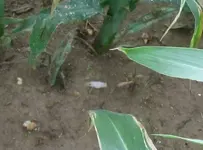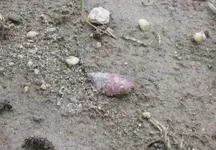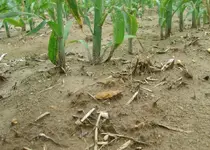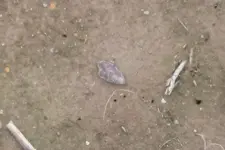Wow, that's quite a haul. Congrats
Maybe it just the photo but how do you know what some of those pieces are? #211, #220, #232 for example. Were these intended to be points and picked up because that was evident from the 'tooling' on them. I'm most curious about #232. I'm in no position to doubt you, just trying to learn a little bit.
Hi Minrelica, Thank you, and great questions. Yes the photos do make it hard to tell what a lot of these items are. I took some more photos but I am afraid they are not that much better.
#211 is what I would call a utilized flake, for cutting or scraping. It is a typical flake that was removed from a cobblestone core of some unnamed grey chert. The outer skin of the cobble (aka. cortex or rind) is seen as a lighter beige color, and indicates the platform, or area, of the cobble that the person struck with a hammerstone or billet to remove the flake. If this flake had had been removed from the core of the cobble and not worked on anymore, I may have taken it home just as an example of the material they were using at this site, or I may have just tossed it back on the ground, depending on my mood. This flake however shows signs along one side where the person carefully removed another dozen or more smaller flakes to produce a shrp edge, or to re-sharpen the edge that was already there. When I rub my finger down this worked edge now it is rather smooth, indicating to me that they used the worked edge of this flake tool until it was worn smooth before discarding it. Each area of the Country has different peoples, different lithic resources, and often different uses for stone tools, in different time periods. Where I hunt and collect from here on the Delmarva peninsula we have very little if any outcroppings up bedrock stone which prehistoric peoples could make tools, so they had to bring it in, or trade it in from other areas, or more often they just used the local cobbles from current or past stream and river beds to make their tools. Unless you go to a major river bed around here it is difficult to find a chert, jasper, quartz, or quartzite cobble larger than a baseball, so most of our cobble source points and tools are relatively small, and reused/refurbished until just nubs. Because of this situation, where I hunt, just about every broken rock found in a farm field is going to have been broken due to the work of man, either broken by the pre-historic peoples for tools, or by historic farm machinery, thus I pick up or flip over just about every broken rock I come across. This would be ridiculous in areas where there is a lot of bedrock laying around due to freeze-thaw cycles, glacier activity etc.
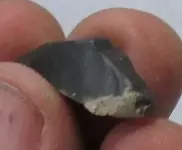
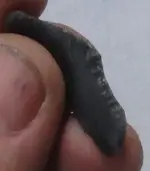
#220 is what I usually call an unfinished biface, or crude scraping tool. It is a yellowish quartzite cobble that still retains some of it's smooth cortex, but has had flakes remove all around to thin it in preparation to make a point, or just to make an expedient cutting or scraping tool. The flakes that have been removed all around indicate to me that it was not modern farm machinery that resulted in it's current form, and a good way to look at these items to determine if they are artifacts is to hold it on edge so that you see it in it's thinnest profile. An artifact/point/biface will usually have the closest edge facing you, roughly midway between it's top and bottom edges, if that makes sense? The photos here hopefully show it better than I explained it. It is not a great artifact by any means, but I found it interesting enough to keep, and wanted to add it's GPS location to the overall file of artifacts picked up from this field.
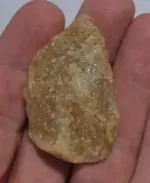

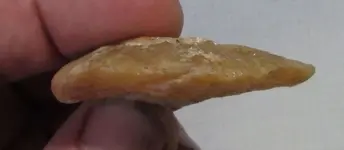
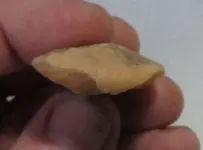
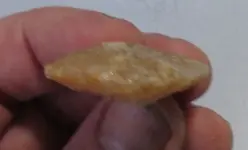
Item# 232 was identifiable to me mainly because it is slate, and the closest source of slate to this site is roughly 80 miles as the crow fly's. I probably would have tossed it back down if it did not have an obvious hole drilled through it, only half of which remains due to it being broken right through where the hole was. Once I got it home and washed it off I could see on each opposing end that it has been smoothed, indicating it at one time had a circumference of about 1 & 7/8". It is probably hard to see on these photos, but on one of the smoothed end areas there are some crosshatched lines engraved. The parallel lines I think are man made, the intersecting line could be plow made, as there are several other plow scars on this piece. In full disclosure I am not 100% certain this is a prehistoric artifact, because it could possibly also be a fragment of a slate roof tile, or something from historic times, who knows? When I was hunting this site with my buddy the week before, I was lamenting that I head never found a slate pendent or artifact, so when I picked this up, I just had to bring it home regardless lol Happy Hunting.
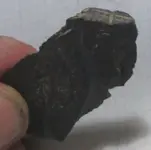
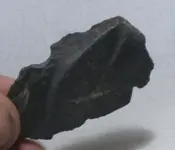
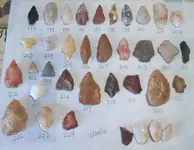
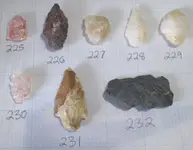
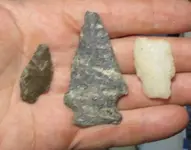
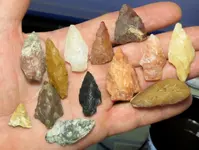 We had a freak storm come through my area last week that dropped 2" of heavy wind blown rain in about an hour. Looking at it on the radar it was a small cell only about 5 miles across that formed right on top of us, dropped it's load without moving much, and then faded away. I decided to slip away mid week to the only local site available that I had permission to hunt. My buddy and I had been there only the week before and walked the whole main campsite finding very little. This time I just walked the low density areas off the main site, where you see very little chips, flakes, fire cracked stones, or material, but you can occasionally find a point here or there. I was pleasantly surprised to pick up about 30 items the first day, while the GPS that I carry says I walked over 6 miles during the hunt. I went back again for a while early Friday morning and was able to find a half dozen other items, including the last find #232 which is a fragment of a drilled slate pendant.
We had a freak storm come through my area last week that dropped 2" of heavy wind blown rain in about an hour. Looking at it on the radar it was a small cell only about 5 miles across that formed right on top of us, dropped it's load without moving much, and then faded away. I decided to slip away mid week to the only local site available that I had permission to hunt. My buddy and I had been there only the week before and walked the whole main campsite finding very little. This time I just walked the low density areas off the main site, where you see very little chips, flakes, fire cracked stones, or material, but you can occasionally find a point here or there. I was pleasantly surprised to pick up about 30 items the first day, while the GPS that I carry says I walked over 6 miles during the hunt. I went back again for a while early Friday morning and was able to find a half dozen other items, including the last find #232 which is a fragment of a drilled slate pendant.
